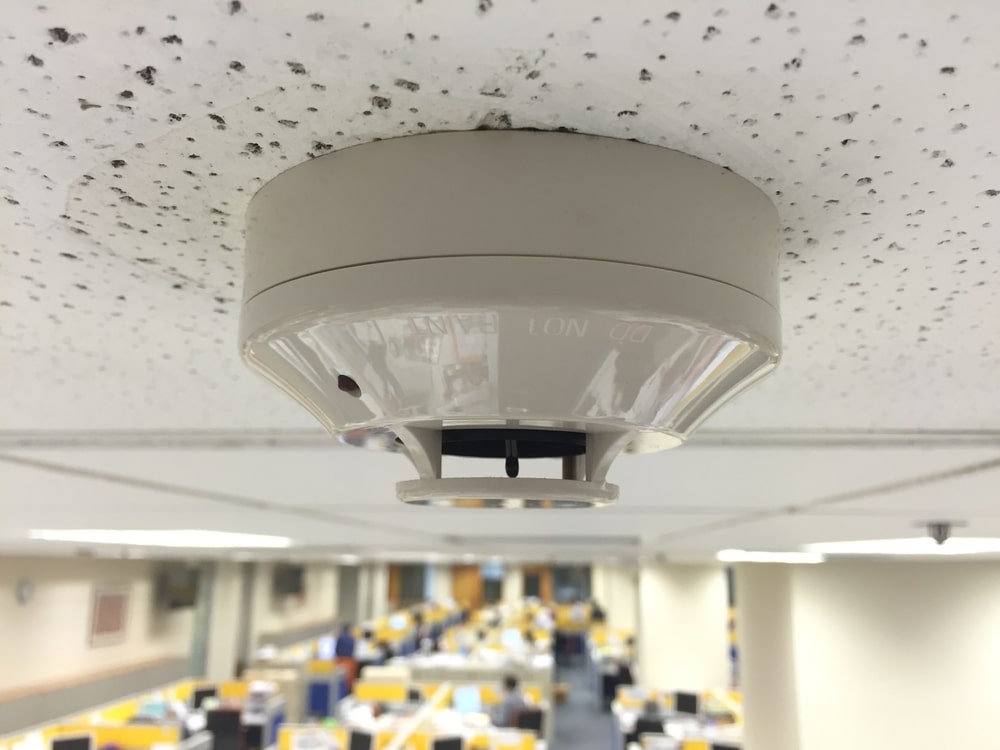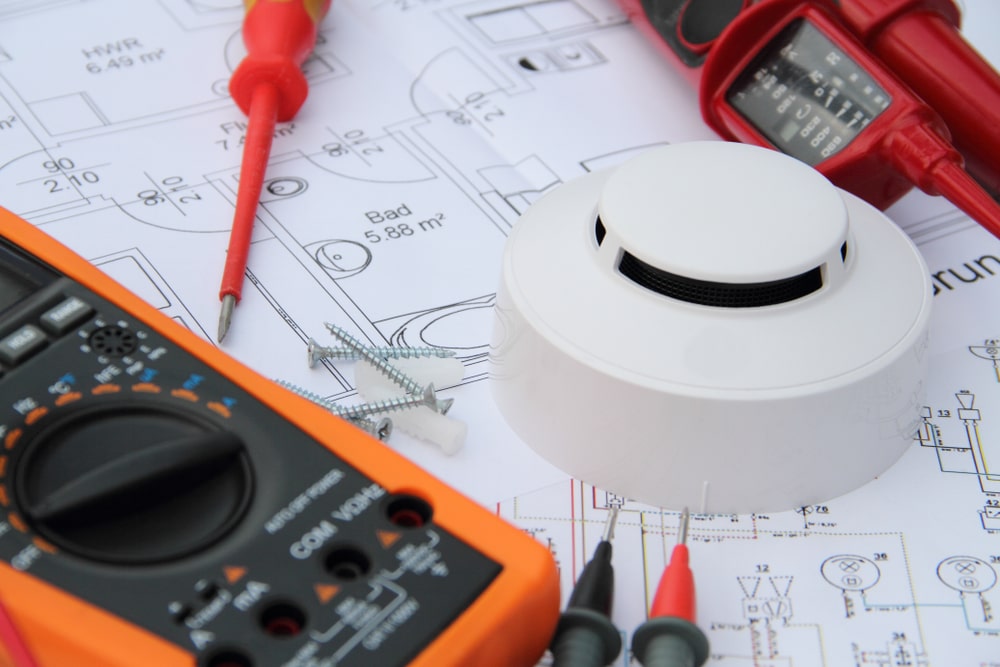When answering the question of where to install smoke detectors in commercial buildings, it is probably wise to firstly clarify the differences between the following terms as sometimes they can be used to incorrectly mean the same thing.
A ‘smoke detector’ does what it says on the tin – it is there to detect when smoke is present within the vicinity of its detection capability.

A ‘smoke alarm’ is the audible sound, and often the visible warning, that is activated once the smoke detector has detected smoke. The detector then sends a signal to the fire alarm control panel which in turn activates the required response – which is usually to set off the ‘fire alarms’.
The term ‘fire alarm’ can therefore be interpreted to mean a multitude of different things from the full fire alarm system to the fact an alarm has sounded indicating the occupants of the building should enact a response to their fire drill which is normally to evacuate the area.
In a commercial environment, each building may present a variety of fire risks and therefore the fire detection devices need to be able to sense all the potential indicators of a potential fire risk which include: smoke, heat, gas, air changes and flame.
Consequently, qualified professionals working in the fire industry and the responsible individual will more often prefer to use the terms ‘detection device’ or a ‘fire alarm device.’
Commercial buildings are required by law to have equipment and procedures in place to detect, alert and notify building occupants to take action in the event of a fire.
An appropriate fire alarm system with the appropriate detection devices are essential fire safety features that commercial properties should have installed.
Depending on the type of commercial property and the business activities taking place within the building, detection devices must be installed either in every room of the property, or on every storey of the property. This will be determined in accordance with the fire safety order which is also known as the Regulatory Reform (Fire Safety) Order 2005 and result from a thorough fire risk assessment by a competent person.
Important considerations should also be made with regards to the installation, commissioning, and maintenance of smoke alarms. If no fire safety systems are currently in place within a commercial property, a fire risk assessment should be carried out to identify the level of protection required under BS 5839-1:2013. This details the fire alarm classification which should be installed. E.g. L1, L2, L3, L4, L5, M, P1, or P2

As you can imagine, there is a lot more legislation governing the installation, placement, testing and maintenance of fire alarms in commercial premises than in residential buildings. British Standards provide guidelines that should be complied with and failure to do so is seen as a breach of a responsibility towards safety and can be punishable by law.
The environment in which the fire alarm system and the classes of fire will be installed will determine which fire detection devicesxx should be installed.
For example, offices should be ok with smoke detectors, whereas in a restaurant or kitchen where food is being cooked over flame hobs, the last thing you want is the fire alarms to be activated because the device has sensed fire.
In these scenario’s a heat sensitive detector is more likely to be installed which are then set to activate at precise heat sensitive parameters.
Fire alarms systems play such a key safety role in commercial buildings and are a legal requirement to protect people, processes and property. Many lives are potentially at stake if the fire alarm system and its component parts such as detection sensors are not correctly specified according to the type of fire risk.
It is vital that a fire risk assessment is carried out by a competent person, because if the fire alarm systems are found to be inadequate, the responsible individual(s) will face harsh penalties, including large fines and in cases of extreme negligence, this can even result a prison sentence if lives are lost as a result of an ineffective approach to fire safety.
Also, if a fire does occur in commercial premises insurance policies may be voided if it can be proved that the fire alarm and fire detection devices were ineffective. Ensuring that maintenance, inspections and any faults that are reported are recorded in your fire log book will help to provide the required evidence.
On new building, the fire risk assessment will be completed by a competent individual who will state the class of fire alarm system that should be installed. The company that has been appointed to install the fire alarm will refer to architectural drawings and plans and conduct site visits in order to determine the optimum position and type of detectors required based on some of the factors we have already discussed.
If the building or fire alarm system is not a new install, there should already be fire detection devices installed. The ongoing process of carrying out regular fire risk assessments will help to identify changes in use of the building and areas where additional fire detectors are required, or where an alternative type of device would be better suited to the environment.
Further advice
If you would like further advice on the design installation and commissioning of fire alarm systems and fire detection devices in your commercial buildings, please complete our contact form.

Neil has held a variety of positions in sales, technical and management since he started in the fire and security industry in 1989. Over this time he has amassed a tremendous amount of experience from working for both large and niche players.